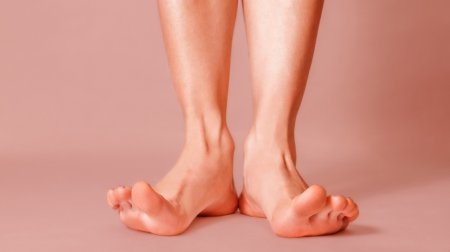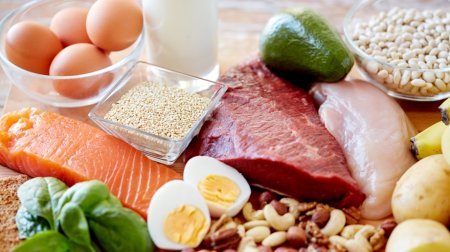Panic Attack: 6 Ways to Control
1. Calm wind
Quickening rhythm of breathing during a panic attack occurs instinctively, as a reaction to the feeling of fear and the appearance of signs of suffocation. When this phenomenon occurs hyperventilation. In combination with high levels of carbon dioxide in the blood, it aggravates the discomfort and enhances the disease symptoms. To stabilize the situation, you need to consistently do the following: Inhale air through your nose for 5 seconds; Hold your breath for 1-2 seconds; Exhale through the half-open mouth for 4 seconds; Before the next breath, wait for 2 seconds; Repeat the cycle as long as the slow breathing will not be automatic.
2. Muscle relaxation
When a panic attack is very important to achieve the removal of muscle hypertonus. To recommend this method of alternating tension and relaxation of different muscle groups. Exercises usually start from the lower extremities, gradually moving upwards. Muscle tension should be carried out on a breath and relax - as you exhale.
3. Control of thoughts
Patients with panic attacks occur regularly, note that an attack can be triggered by even the thought that it is possible, and the fear of its occurrence. Therefore, for these patients it is very important to control your mood, not to allow the process to become an avalanche. Establishing a relaxing thought system with an adequate assessment of the real situation of danger technique called attention or cognitive therapy biheyvioralnoy. Patients are not always able to independently learn to control your thoughts. Many of them need individual counseling therapist or group lessons. This is particularly true for people with so-called catastrophic mindset: they usually are not able to adequately assess the situation without professional assistance.
4. Physical activity
People who are prone to panic attacks, fear of another attack often try to make as little as possible of unnecessary movements and seldom leave the house. This approach is very harmful. Patients should not give up physical activity: walking outdoors, burdensome exercise, swimming is not only provoke the appearance of disease symptoms, but increase the production of endorphins, which help cope with stress, improve mood and overall health.
5. Planning
Factors occurrence of panic attacks are often standard stressful situations: for example, the attacks occur in students that are overly worried before exams, or people experiencing the fear of air travel. These patients are usually aware of the specifics of their reactions, but without competent approach that knowledge only makes the problem worse. The best thing - to try to prepare for the unpleasant events (if you can not avoid it). Prevent panic attack is possible, think the situation sensibly and adequately evaluate the existing risks. It is also useful to ask for help from family or friends, please inform them about their characteristics, to warn about the possible ill effects and how to minimize their effects.
6. A balanced diet
For those suffering from panic attacks, it is critical to maintain optimal blood sugar levels. Therefore, they show regular meals with breaks between meals no more than 4 hours. The diet should be balanced the content of essential nutrients and the most full of vitamins. Patients should not drink alcohol. It is necessary to limit as black coffee and strong tea as caffeine, these drinks are rich, tones the body, what could provoke an attack.
A panic attack itself is not life-threatening, but with regular repetition can cause the development of pathologies of the cardiovascular system, or serious violations of neurological order. The repeated occurrence of such conditions the patient should see a specialist, to early treatment and do not run the disease.
Quickening rhythm of breathing during a panic attack occurs instinctively, as a reaction to the feeling of fear and the appearance of signs of suffocation. When this phenomenon occurs hyperventilation. In combination with high levels of carbon dioxide in the blood, it aggravates the discomfort and enhances the disease symptoms. To stabilize the situation, you need to consistently do the following: Inhale air through your nose for 5 seconds; Hold your breath for 1-2 seconds; Exhale through the half-open mouth for 4 seconds; Before the next breath, wait for 2 seconds; Repeat the cycle as long as the slow breathing will not be automatic.
2. Muscle relaxation
When a panic attack is very important to achieve the removal of muscle hypertonus. To recommend this method of alternating tension and relaxation of different muscle groups. Exercises usually start from the lower extremities, gradually moving upwards. Muscle tension should be carried out on a breath and relax - as you exhale.
3. Control of thoughts
Patients with panic attacks occur regularly, note that an attack can be triggered by even the thought that it is possible, and the fear of its occurrence. Therefore, for these patients it is very important to control your mood, not to allow the process to become an avalanche. Establishing a relaxing thought system with an adequate assessment of the real situation of danger technique called attention or cognitive therapy biheyvioralnoy. Patients are not always able to independently learn to control your thoughts. Many of them need individual counseling therapist or group lessons. This is particularly true for people with so-called catastrophic mindset: they usually are not able to adequately assess the situation without professional assistance.
4. Physical activity
People who are prone to panic attacks, fear of another attack often try to make as little as possible of unnecessary movements and seldom leave the house. This approach is very harmful. Patients should not give up physical activity: walking outdoors, burdensome exercise, swimming is not only provoke the appearance of disease symptoms, but increase the production of endorphins, which help cope with stress, improve mood and overall health.
5. Planning
Factors occurrence of panic attacks are often standard stressful situations: for example, the attacks occur in students that are overly worried before exams, or people experiencing the fear of air travel. These patients are usually aware of the specifics of their reactions, but without competent approach that knowledge only makes the problem worse. The best thing - to try to prepare for the unpleasant events (if you can not avoid it). Prevent panic attack is possible, think the situation sensibly and adequately evaluate the existing risks. It is also useful to ask for help from family or friends, please inform them about their characteristics, to warn about the possible ill effects and how to minimize their effects.
6. A balanced diet
For those suffering from panic attacks, it is critical to maintain optimal blood sugar levels. Therefore, they show regular meals with breaks between meals no more than 4 hours. The diet should be balanced the content of essential nutrients and the most full of vitamins. Patients should not drink alcohol. It is necessary to limit as black coffee and strong tea as caffeine, these drinks are rich, tones the body, what could provoke an attack.
A panic attack itself is not life-threatening, but with regular repetition can cause the development of pathologies of the cardiovascular system, or serious violations of neurological order. The repeated occurrence of such conditions the patient should see a specialist, to early treatment and do not run the disease.





